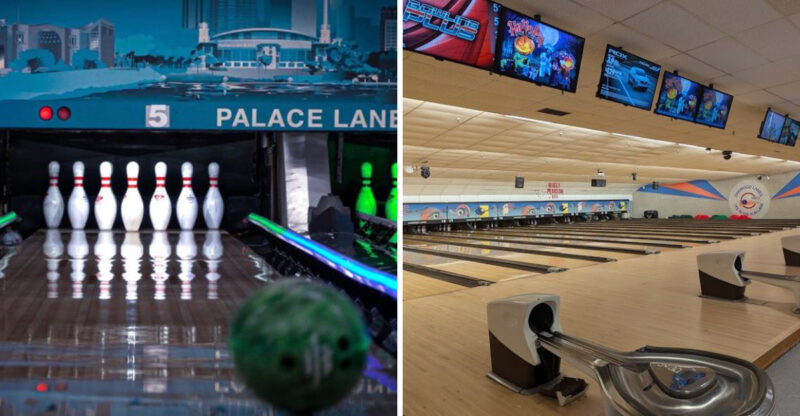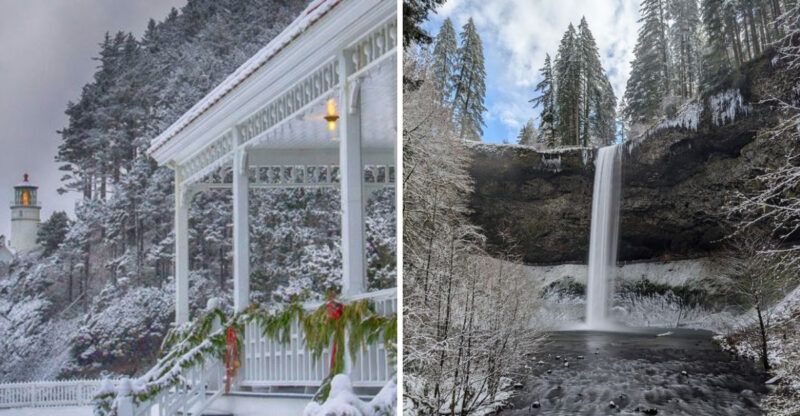Arizona’s Top-Rated Museums, According to Tripadvisor Travelers

Soft light, quiet halls, and carefully preserved stories create a kind of magic that stays with you. Museums have a way of connecting past and present, revealing details that might otherwise be forgotten.
Arizona brings that experience to life across institutions shaped by its culture, history, and creative spirit. Each one offers a distinct perspective, inviting visitors into moments that spark curiosity and linger long after the visit ends.
Musical Instrument Museum
Over 4,300 instruments from every corner of the globe fill this Phoenix treasure, creating a symphony of cultural discovery. Visitors can explore musical traditions spanning continents, with interactive headsets that play recordings as they wander through exhibits.
The experience feels like traveling the world through sound, offering insights into how music shapes communities and connects people across time and geography.
Arizona-Sonora Desert Museum
Blending zoo, botanical garden, and natural history displays across 98 acres, this Tucson gem showcases the Sonoran Desert’s remarkable biodiversity. Pathways wind through habitats where native animals roam and cacti tower overhead.
It’s part wildlife encounter, part desert classroom, where learning happens naturally as visitors observe creatures and plants thriving in their authentic environment.
Heard Museum
Phoenix’s Heard Museum stands as a guardian of Native American heritage, housing extensive collections of art and artifacts from Southwest indigenous cultures. Galleries reveal centuries of creativity, from ancient pottery to contemporary paintings.
Each piece tells stories of resilience, tradition, and artistic innovation, offering visitors a deeper understanding of the region’s first peoples and their enduring cultural contributions.
Pima Air & Space Museum
Aircraft enthusiasts find paradise at this Tucson facility, where hundreds of planes and spacecraft rest on expansive grounds. Military jets, civilian airliners, and experimental craft create a timeline of aviation innovation.
Walking among these engineering marvels sparks wonder about human flight’s rapid evolution, from early propeller models to modern spacecraft that ventured beyond Earth’s atmosphere.
Children’s Museum Of Phoenix
Young explorers up to age 10 discover learning through play at this Phoenix haven designed specifically for curious minds. Hands-on exhibits encourage climbing, building, creating, and experimenting in safe, imaginative spaces.
Parents appreciate how the museum transforms education into adventure, where kids develop skills while having so much fun they don’t realize they’re learning valuable lessons about the world.
Phoenix Art Museum
Arizona’s largest art institution showcases works spanning centuries and continents, from European masters to contemporary American artists. Rotating exhibitions keep the experience fresh, while permanent collections offer familiar favorites.
The museum’s light-filled galleries provide contemplative spaces where visitors can lose themselves in creative expression, discovering new perspectives with each painting, sculpture, or installation they encounter along the way.
Titan Missile Museum
South of Tucson, an actual Cold War missile silo opens its doors to reveal a fascinating and sobering chapter of history. The preserved Titan II missile stands ready, exactly as it did during decades of nuclear standoff.
Guided tours descend underground into the launch control center, where visitors grasp the reality of living through an era when global destruction waited at the turn of a key.
Arizona Railway Museum
Chandler’s tribute to railroad heritage preserves locomotives, passenger cars, and freight equipment that once connected Arizona communities. Volunteers maintain these mechanical giants, keeping history rolling for future generations.
Visitors can climb aboard vintage cars, imagining journeys across desert landscapes when rail travel represented the height of transportation technology and adventure before highways changed everything about American mobility and commerce.
Tucson Museum Of Art
Downtown Tucson’s cultural anchor celebrates art from the American West, Latin America, and beyond through thoughtfully curated galleries. Historic buildings surround the museum, adding architectural interest to the artistic experience.
The collection emphasizes regional artists and cultural connections between neighboring countries, creating conversations about how geography and heritage influence creative expression across borders and through generations of artistic innovation.
Arizona Science Center
Phoenix’s downtown science hub transforms complex concepts into engaging, touchable experiences that spark curiosity in visitors of all ages. Four floors of exhibits cover everything from human biology to physics principles.
The planetarium adds cosmic wonder, projecting stars and planets overhead while explaining celestial mechanics. Science becomes accessible here, demystified through experiments and demonstrations that make abstract ideas suddenly click into understanding.
Scottsdale Museum Of Contemporary Art
Cutting-edge creativity finds a home in Scottsdale’s sleek contemporary art space, where challenging exhibitions push boundaries and provoke thought. The museum focuses on art, architecture, and design from recent decades.
Visitors encounter works that might puzzle, inspire, or unsettle, which is exactly the point. Contemporary art thrives on dialogue and reaction, inviting viewers to question assumptions and see the world through fresh, sometimes uncomfortable perspectives.
Mesa Arizona Temple Visitors’ Center
Adjacent to one of Arizona’s most distinctive landmarks, this visitors’ center offers insights into Latter-day Saint beliefs and history through multimedia presentations and exhibits. The temple’s architecture itself captivates with its unique design.
Gardens surrounding the property provide peaceful walking paths, while guides inside answer questions about faith, community, and the temple’s role in local religious life spanning nearly a century of Arizona history.
Hall Of Flame Fire Museum
Phoenix houses the world’s largest firefighting museum, showcasing fire engines, equipment, and memorabilia spanning centuries of fire protection history. Gleaming vintage trucks line the halls, each representing technological advances in emergency response.
The collection honors firefighters’ bravery while documenting how communities organized to combat flames. From hand-pumped engines to modern apparatus, the evolution of firefighting technology reflects society’s growing sophistication in protecting lives and property.
Arizona Mining And Mineral Museum
Once a showcase of Arizona’s geological wealth, this Phoenix museum displayed striking mineral specimens and mining artifacts that told the story of the state’s underground resources. Though it closed in 2011, its collections are now cared for by the Arizona Mining, Mineral and Natural Resources Education (AMMNRE) Museum.
Redevelopment efforts aim to create an updated museum in the future, preserving the state’s mining heritage while planning new educational exhibits. While not currently open to visitors, its legacy continues as Arizona works toward a renewed space celebrating its mineral history.
S’edav Va’aki Museum
Right in Phoenix, an ancient Hohokam village site preserves structures and artifacts from people who thrived in the desert centuries before modern settlement. Archaeological ruins sit protected beneath ramadas, visible to curious visitors.
The museum interprets daily life, irrigation systems, and cultural practices of these early desert farmers. Walking the platform mound and viewing pottery shards connects present-day Phoenix to its deep indigenous roots and forgotten civilizations.
McCormick-Stillman Railroad Park
Scottsdale’s beloved railroad park combines working miniature trains with historic full-size equipment, creating multigenerational appeal. Families ride the small-scale railway circling the property, while railroad enthusiasts examine preserved locomotives and cars.
The museum building displays model railroads and memorabilia, but the real magic happens outdoors where kids wave from train windows and carousel music drifts across the park, blending nostalgia with simple pleasures.
Arizona History Museum (Arizona Historical Society)
Tucson’s historical society maintains extensive collections documenting Arizona’s transformation from frontier territory to modern state. Exhibits rotate, but themes consistently explore mining heritage, territorial life, and cultural diversity.
Photographs, clothing, tools, and documents provide windows into daily existence across different eras. The museum serves as memory keeper for Arizona, preserving stories that might otherwise fade as generations pass and old-timers take their recollections with them.
Taliesin West
Frank Lloyd Wright’s winter home and architectural school rises from the Scottsdale desert, demonstrating his organic design philosophy through structures that blend with rocky surroundings. Tours reveal living spaces, studios, and theaters Wright designed.
The compound feels both timeless and futuristic, with angular geometry and natural materials creating harmony between human creation and desert landscape. Architecture students still study here, continuing Wright’s legacy of innovative, environment-responsive design.
Champlin Fighter Museum
Mesa’s collection of fighter aircraft focuses on World War I and II planes, preserving the machines that changed aerial combat forever. Restored fighters gleam under museum lights, many still bearing original markings.
Aviation buffs appreciate the museum’s dedication to authenticity and preservation. Each aircraft represents engineering innovation born from wartime necessity, when designers raced to create faster, more maneuverable machines that could dominate the skies over battlefields.
Shemer Art Center
A historic adobe home in Phoenix now serves as a community art center showcasing local and regional artists through rotating exhibitions. The intimate galleries feel more like visiting someone’s home than a formal museum.
Classes and workshops happen regularly, making art creation accessible to community members. The center proves that art spaces need not be grand institutions; sometimes the most meaningful cultural experiences occur in modest, welcoming settings that prioritize participation.
Arizona Commemorative Air Force Museum
Mesa’s tribute to World War II aviation maintains flyable aircraft, not just static displays. The roar of vintage engines brings history alive during special events when these warbirds take to Arizona skies.
Volunteers restore and maintain the planes, preserving mechanical knowledge along with the aircraft themselves. The museum honors veterans while educating younger generations about the aircraft that helped win history’s largest conflict through air superiority and strategic bombing.
Sigler Western Museum
Wickenburg’s museum celebrates Arizona’s cowboy heritage through art, artifacts, and recreated frontier scenes. Paintings by renowned Western artists hang alongside saddles, spurs, and period rooms furnished as they were during territorial days.
The collection captures the romance and reality of Western life, showing both the hardships faced by early settlers and the cultural mythology that grew around cowboys, ranching, and the American frontier experience in Arizona.
Bisbee Mining & Historical Museum
Housed in the former Copper Queen consolidated mining office, this Bisbee museum earned Smithsonian affiliation for its excellent interpretation of mining town life. Exhibits detail the geology, technology, and human stories behind copper extraction.
Bisbee’s entire existence depended on the mines, and the museum captures that total economic and social dependence. Photographs show diverse immigrant communities drawn to mining work, creating the multicultural character that still defines this quirky mountain town.
Yuma Territorial Prison State Historic Park
Arizona’s most infamous prison operated from 1876 to 1909, housing hardened criminals in cells carved from desert rock. Today, visitors walk through cell blocks and examine exhibits about prison life in the brutal Southwest heat.
The facility earned a fearsome reputation, though conditions were actually progressive for the era. Stories of escapes, riots, and daily routines reveal the harsh reality of 19th-century justice and punishment on the frontier.
Arizona Capitol Museum
Phoenix’s original capitol building now serves as a time capsule of Arizona’s political journey from territory to statehood. Restored legislative chambers and governor’s offices transport visitors back to early 20th-century governance.
Exhibits trace the state’s evolution through photographs, documents, and artifacts that highlight key moments, influential leaders, and the challenges faced by pioneers building a government in the desert Southwest.
Tempe History Museum
Tempe’s story unfolds through multimedia exhibits in a contemporary building that contrasts with the historical content inside. Interactive displays trace the town’s evolution from agricultural community to university city.
Local history sometimes gets overlooked in favor of grand narratives, but this museum proves that every community has compelling stories. Tempe’s transformation reflects broader patterns of Southwestern growth, urbanization, and cultural change across the twentieth century.
Lowell Observatory
Northern Arizona’s science center emphasizes astronomy, fitting given Flagstaff’s status as a dark sky city and home to Lowell Observatory. The planetarium projects stars as they appear from this high-elevation location.
Hands-on exhibits explain scientific principles through experimentation and play. The center makes science approachable for families, demonstrating that learning about the universe can be both educational and entertaining when presented with enthusiasm and clear explanations.
Verde Valley Archaeology Center
Central Arizona’s archaeological treasures find interpretation at this center dedicated to the region’s ancient inhabitants. Artifacts from nearby Sinagua and other cultures reveal sophisticated societies that flourished before European contact.
The center partners with tribes and researchers to present accurate, respectful interpretations of indigenous heritage. Visitors gain appreciation for the complex civilizations that built cliff dwellings and irrigation systems, adapting brilliantly to challenging desert and mountain environments.
Fort Huachuca Museum
Southern Arizona’s active Army post maintains a museum documenting its history from frontier cavalry days through modern military intelligence operations. Fort Huachuca played crucial roles in Apache campaigns and later electronic warfare development.
Exhibits show military life across different eras, from 19th-century soldier quarters to Cold War communications equipment. The Buffalo Soldiers who served here receive special recognition for their contributions to Western settlement and military history.
Arizona Doll And Toy Museum
Childhood nostalgia fills this Phoenix museum where dolls, toys, and games from past generations line display cases. Antique porcelain dolls share space with mid-century playthings, creating a timeline of how children entertained themselves.
The collection sparks memories for older visitors while fascinating younger ones with toys their grandparents cherished. Simple pleasures from pre-digital eras remind everyone that imagination and play transcended the technology available in any particular era.






